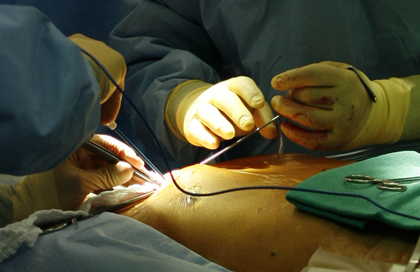
Patients scheduled for myocardial revascularization surgery (only multivessel procedures; combined valve procedures were excluded) were randomized to receive a single internal-thoracic-artery graft (internal thoracic artery for the anterior descending artery, other vessels with grafts from veins or the radial artery) or two internal-thoracic-artery grafts (other vessels with grafts from veins or the radial artery) in 28 cardiac surgical centers in 7 countries.
The primary endpoint was all-cause death at 10 years, and the secondary endpoint was a composite of all-cause death, acute myocardial infarction, or stroke. An interim analysis was prespecified at 5 years of follow-up and is reported in this summary.
A total of 3102 patients were enrolled; 1554 were randomized to receive a single internal-thoracic-artery graft and 1548 to receive a double internal-thoracic-artery graft.
At 5 years of follow-up, the mortality rate was 8.7% for patients in the double internal-thoracic-artery graft group and 8.4% for those in the single internal-thoracic-artery graft group (hazard ratio [HR]: 1.04; 95% confidence interval [CI]: 0.81 to 1.32; p = 0.77). The rate of the composite endpoint of all-cause death, infarction, and stroke was 12.2% vs. 12.7%, respectively (HR: 0.96; 95% CI: 0.79 to 1.17; p = 0.69).
Differences were indeed observed regarding the risk of sternal wound infection, which was higher among those receiving a double internal-thoracic-artery graft (3.5% vs. 1.9%; p = 0.005), and the need for sternal reconstruction (1.9% vs. 0.6%; p = 0.002).
Conclusion
Among patients undergoing myocardial revascularization surgery, there were no benefits at 5 years for those receiving double internal-thoracic-artery grafts when compared with those in which only the left internal thoracic artery was used. Sternal wound infections and the need for sternal reconstruction were significantly more frequent in patients receiving double internal-thoracic-artery grafts. Ten-year follow-up is ongoing, and benefits are yet to be seen.
Original title: Randomized Trial of Bilateral Versus Single Internal-Thoracic-Artery Grafts.
Reference: David P. Taggart et al. N Engl J Med. 2016 Nov 14. [Epub ahead of print].
Subscribe to our weekly newsletter
Get the latest scientific articles on interventional cardiology
We are interested in your opinion. Please, leave your comments, thoughts, questions, etc., below. They will be most welcome.




